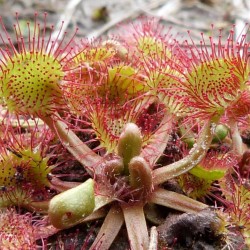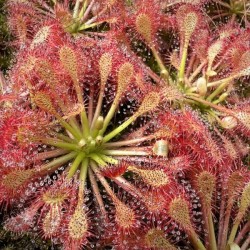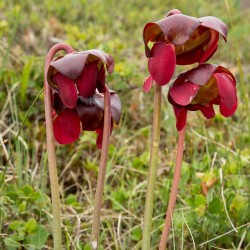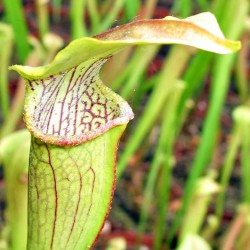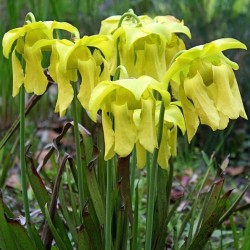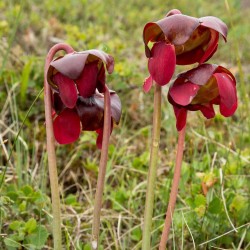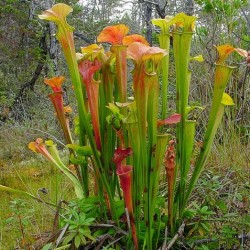No products
Product successfully added to your shopping cart
There are 0 items in your cart. There is 1 item in your cart.
Categories
FAQ
In this category, we offer hardy carnivorous plants adapted to the European climate. These are bog plants that will go wonderfully well with certain varieties of Dactylorhiza and Marsh Epipactis.
Hardy carnivorous plants
Drosera rotundifolia
Drosera rotundifolia is a carnivorous plant native to the peat bogs of northern Europe. It is easily recognised by its rosette of spreading leaves, the tips of which are round and sometimes dipped in water. The flowers are either white or pink. These are very hardy plants (-20°C) if kept in large pots (minimum 3 liter) or preferably in a peat bog.
12,17 €In stockDrosera intermedia
Drosera intermedia is a carnivorous plant native to the peat bogs of Europe and North America.The upper surface of its leaves has hairs that secrete a sticky liquid at their tips to capture insects.Its white flowers are visible in summer.These plants are hardy (-10°C) if kept in large pots (minimum 3 litres) or preferably in peat bogs.9 cm pots
12,17 €In stockSarracenia purpurea
Native to the peat bogs of Canada, Alaska and the northern United States, this species is used to the extreme cold. The leaves are remarkably colourful. Pink when young, they turn from green to purple later on, depending on temperature and sunlight. The flowers appear from April to June. Purple-red in colour, they have an original shape, measure up to 8...
14,35 € 15,94 € -10%In stockSarracenia alata
Native to the south-east of the United States (Texas, Alabama, Mississippi and Lousiana), Sarracenia alata has urns 30 to 50 cm high. Its leaves are green, slightly veined and fairly narrow. Its magnificent pale yellow flowers are unique to this species. The flower is large, 5 to 7 cm in diameter, with a light lemon and violet fragrance. From October to...
15,94 €Out of stockSarracenia flava
Native to the peat bogs of Florida and Louisiana, this is a large species that forms impressive clumps. The leaves are colourful. Yellow to pink when young, they turn green or purple depending on the temperature and sunlight. The flowers appear from April to June. They are yellow in colour, have an unusual shape, measure up to 8 cm in diameter and can...
15,94 €Out of stockSarracenia purpurea var venosa
This is a small carnivorous plant with very large purple-pink pitchers. It is named venosa because of the numerous red veins that run through the pitchers. The flowers appear from April to June. They are red in colour, have an unusual shape, measure up to 8 cm in diameter and can last for several months. Even after they have faded, they remain beautiful...
15,94 €In stockSarracenia oreophila
Sarracenia oreophila is a carnivorous perennial plant native to the United States. Natural populations are now very rare and may soon disappear. This species is currently only found in mountainous areas of Georgia, North Carolina and South Carolina. It thrives in ponds, swamps and damp woods and is remarkably cold hardy. The urns can be 20 to 75 cm...
17,83 €In stock

